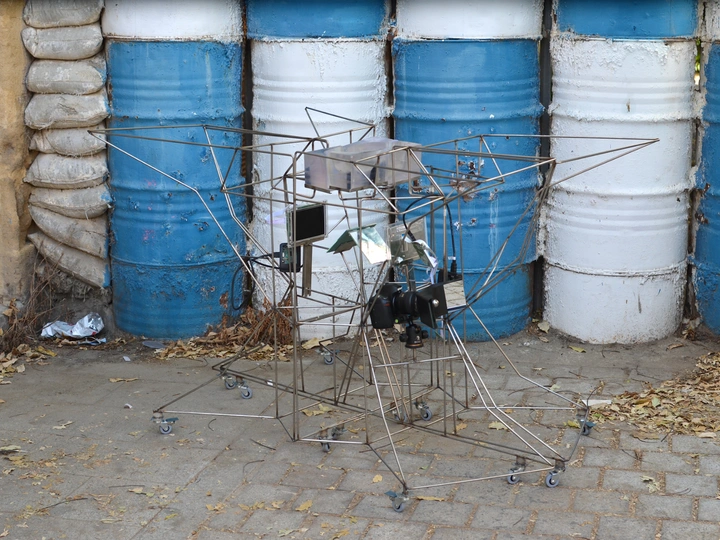A Postcolonial Table in No Man's Land

As a researcher, architect, educator, and writer I situate my practice at the intersection of various fields. Using customised visual devices such as the mirror stereoscope, I re-deploy these in relation to digital media. This investigation is superimposed with site-specific observations, re.g. the site of Nicosia's surveillance territory as well and its ecological conditions. What emerges through these two hybrid research strands is an installation that positions the bodily viewer within a mediated experience that questions the role of Cypriot subjective identity. By doing so, the project tackles the colonial history of Cyprus. Through such media installations, my practice questions how biopolitical bodies are controlled, surveilled, and produced in relation to digital-analog media assemblages that enable other ways to see bodies. 'Real' time technical media -such as live stereoscopy – are brought within the participants' perceptual field producing human and non-human hybrid configurations that unhinge identity constructs.
My writing, custom-made devices, and participatory multimedia installations have been presented and exhibited internationally in Future Architecture Platform (2019), Venice Architecture Biennale (2018), ACM Siggraph (2018), Acadia (2016), CAADRIA (2024), MAO – Museum of Architecture and Design, Architecture and Culture, Site Magazine, Drawing: Research, Theory, Practice, Cinema&Cie, Journal of Posthuman Studies, Lo Squaderno, Journal of Architecture (forthcoming), etc. I am co-editor of This Thing Called Theory (Routledge, 2016), and co-convenor of the AHRA 2024 Conference: Body Matters, and have taught at Norwich University of the Arts, Leicester School of Architecture, Leeds School of Architecture, and was a visiting lecturer at CUINDA, Bangkok, and University of the Arts, Helsinki.
The installation takes the form of a table that attaches onto the dividing barrel walls in Nicosia's buffer zone. The participant can interact with this piece and slot their head inside the table top that takes the inverse form of a face mould. When one positions their head inside this cavity they will unexpectedly see themselves seeing themselves in three-dimensional depth. One becomes further de-familiarized from themselves when they realise that their depth-image has different backgrounds. As foreground and background are segmented in 'real' time through digital media and 'live' coding, the images of the viewer appear in the inaccessible No Man's Land. The images also reveals the lush vegetation in this territory, emphasising how human catastrophe has allowed rare plants such as the Cyprus Tulip to proliferate. The 'live' images conflate a strange hybrid world of human, animal and plant species interspersed with their technical mediation. The proposal aims to challenge colonial identity constructs by producing images that overwhelm one's habituated sense of self.
The work thus calls attention to past local identities -such as the Linobambakoi - that have been eradicated by colonialist and postcolonial regimes of power. It aims to bring to the fore minoritarian people, and hence to empower multiple identities that exceed ethno-nationalist confinements. The piece is positioned within a heavily surveilled site, the table is thus designed to hide its operation from the regimes that control the border.